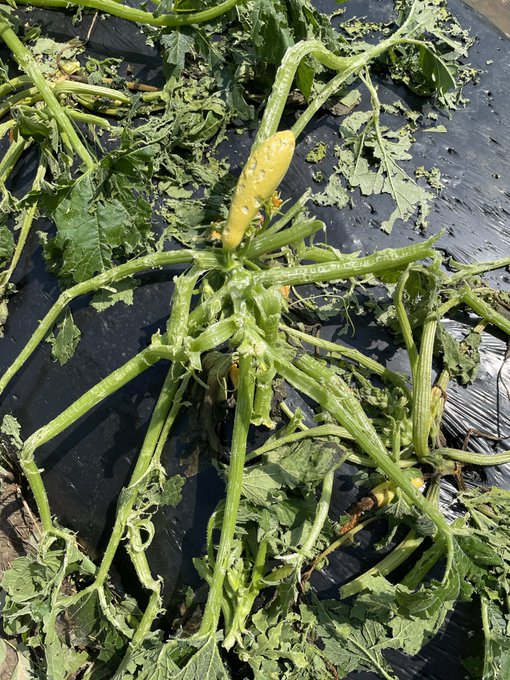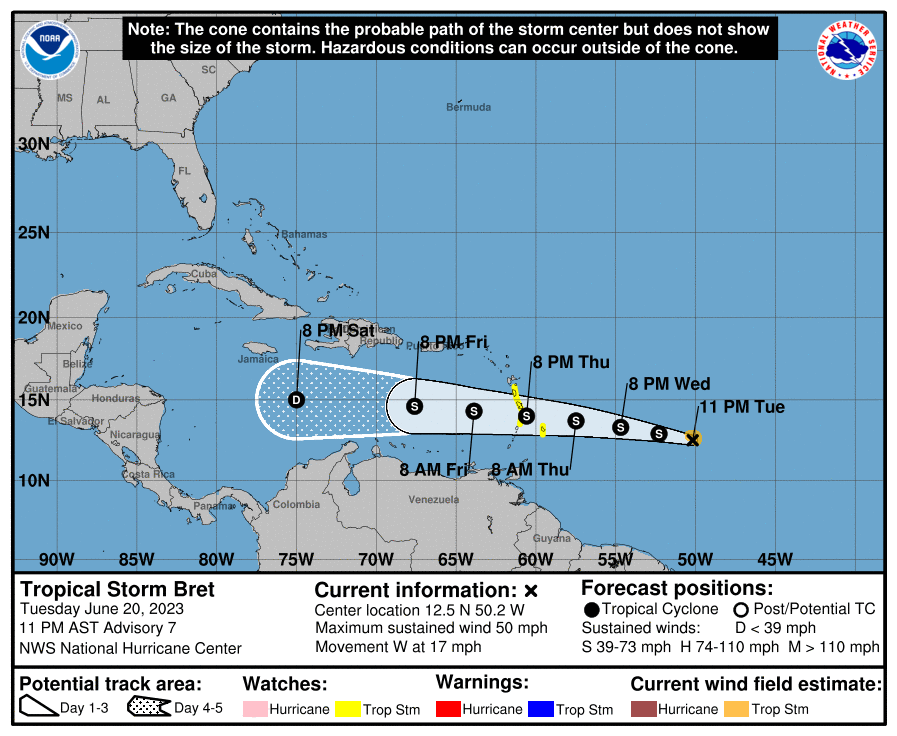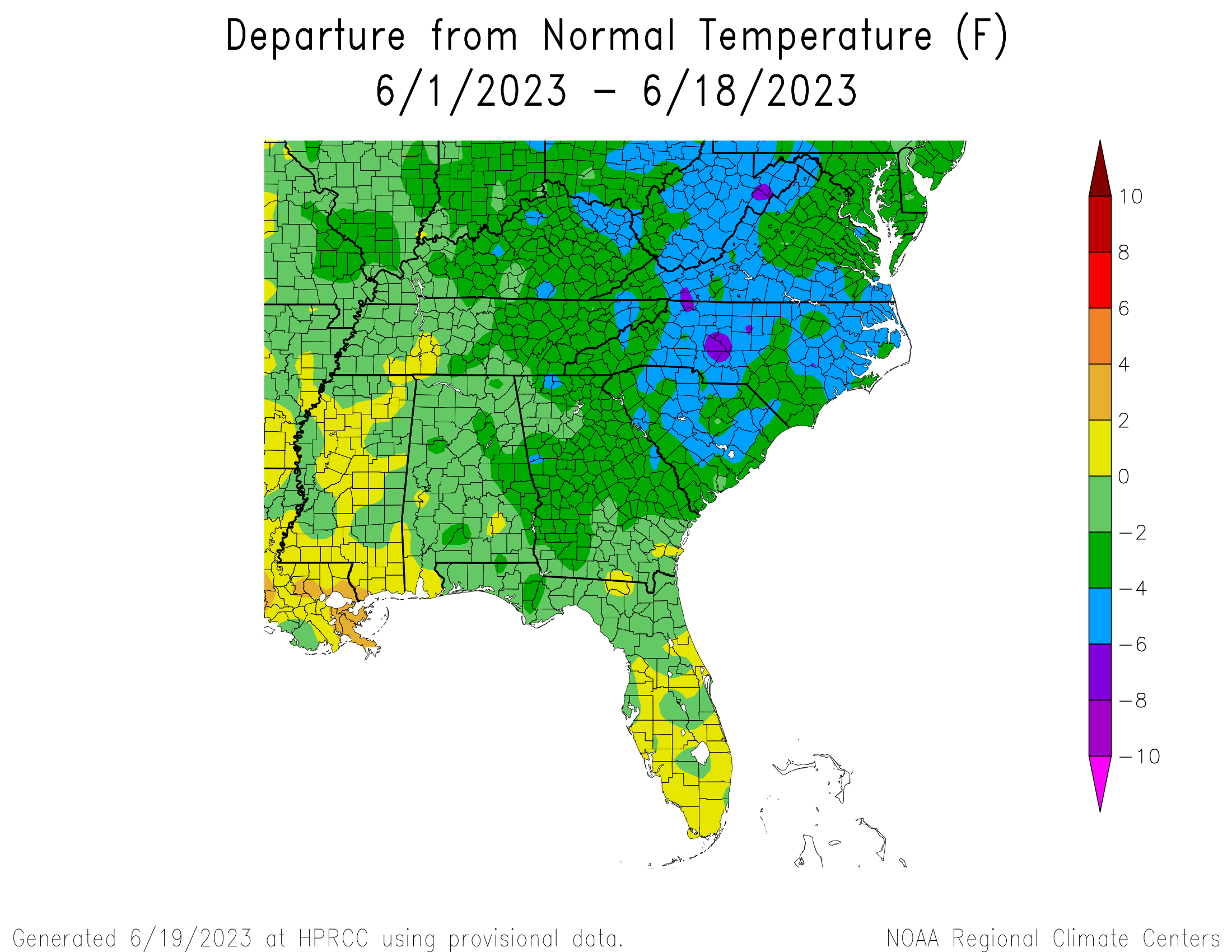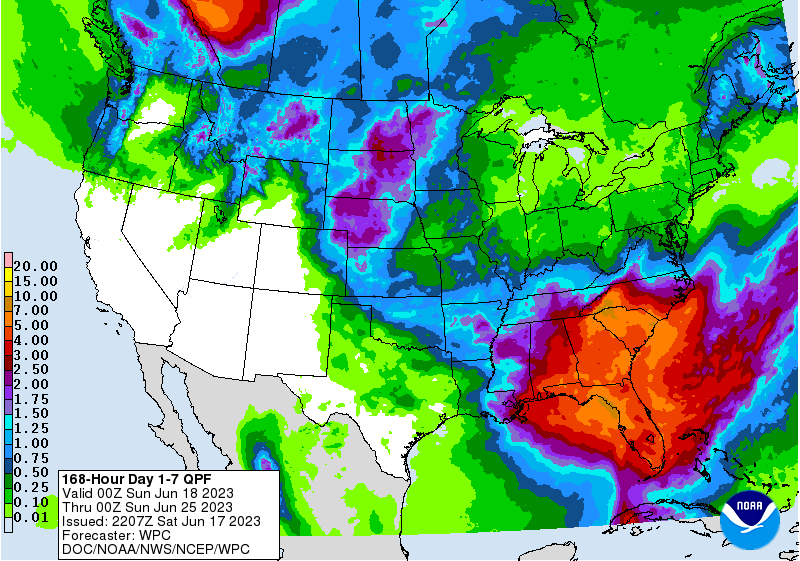-

One of the amazing things about the weather in the Southeast the past week or two is the amount of severe weather that we have seen in a month that usually does not have much. Especially notable has been the amount of large hail, which has caused severe damage to cotton, vegetable, and corn crops…
-

The latest prediction for TS Bret is that it is expected to continue to move east and is no longer expected to reach hurricane status due to strong wind shear that is already tilting the circulation and weakening it. Most likely it will fizzle somewhere over the Caribbean but could bring some heavy rain and…
Posted in: Tropical weather -

This year’s summer solstice occurs on Wednesday, June 21, 2023 in late morning. The solstice is the start of astronomical summer, although climatological summer starts June 1. You can read more at EarthSky through the link below.
Posted in: Climate and Ag in the news -

Tonight the National Hurricane Center officially declared Bret as a tropical storm. The forecast cone shows that Bret is expected to continue west and gradually strengthen to a hurricane until it gets into the Caribbean. At that point, wind shear is likely to weaken Bret back to a tropical storm. The computer models have a…
Posted in: Tropical weather -

A quick look at June 2023 so far shows that for most of the region, temperatures have been cooler than average. The only exception is the southern portions including most of Florida. Rainfall has been variable, with a persistent streak of wet conditions stretching NW to SE across Alabama and SW Georgia into Florida. This…
Posted in: Climate summaries -

The latest 7 day QPF map shows another wet week is ahead for nearly all of the region. While this weekend will be dry in the north, rain will return to the area for most days this week. The driest area will be Virginia, where drought has been expanding as most rain falls farther south…
Posted in: Climate outlooks -

Today the National Hurricane Center posted a 7-day outlook that shows a wave that recently came off of Africa has a 70 percent chance of developing in the next seven days. This is quite a bit earlier than usual, but since water temperatures are much warmer than usual there is plenty of energy for a…
Posted in: Tropical weather